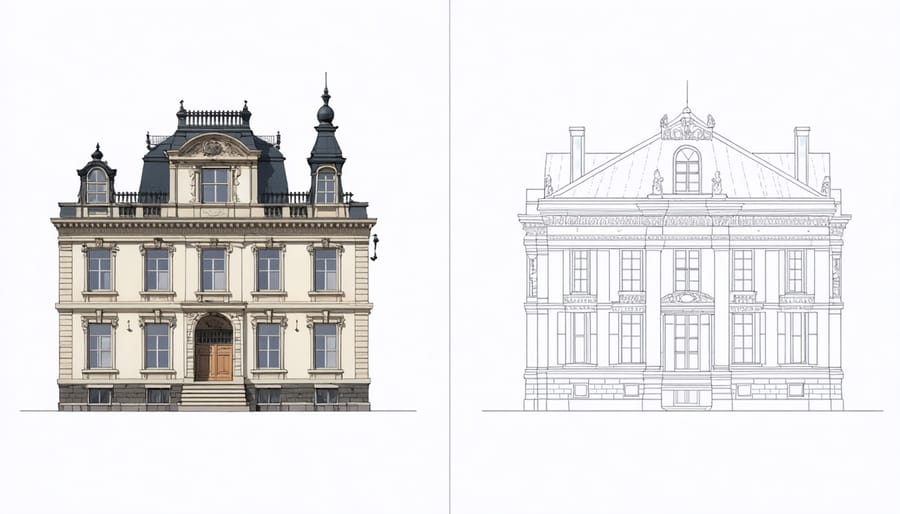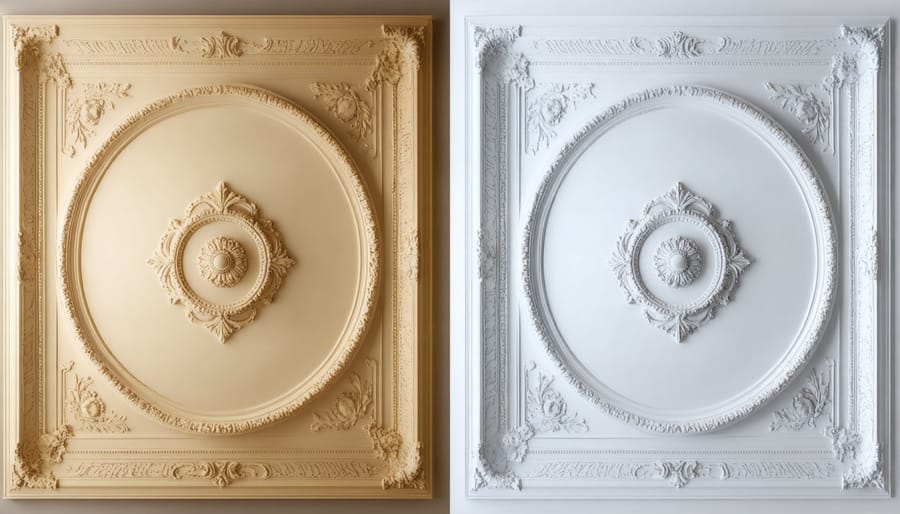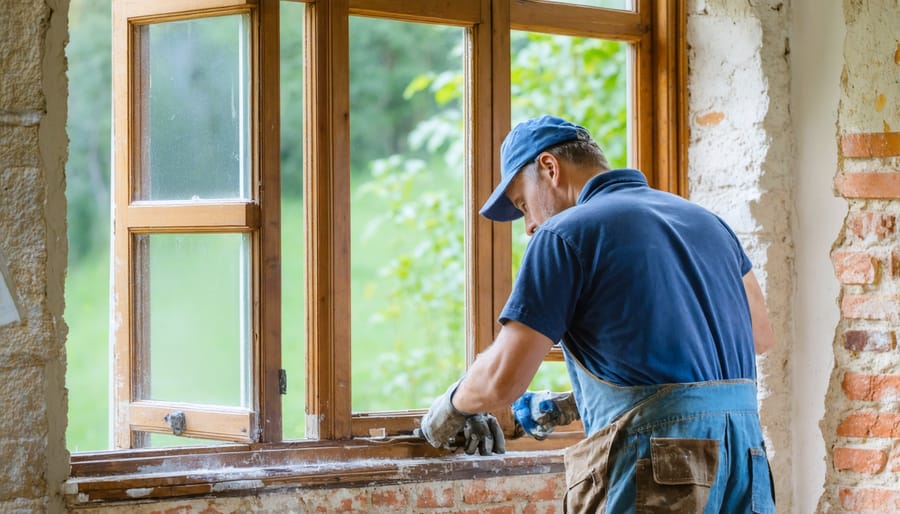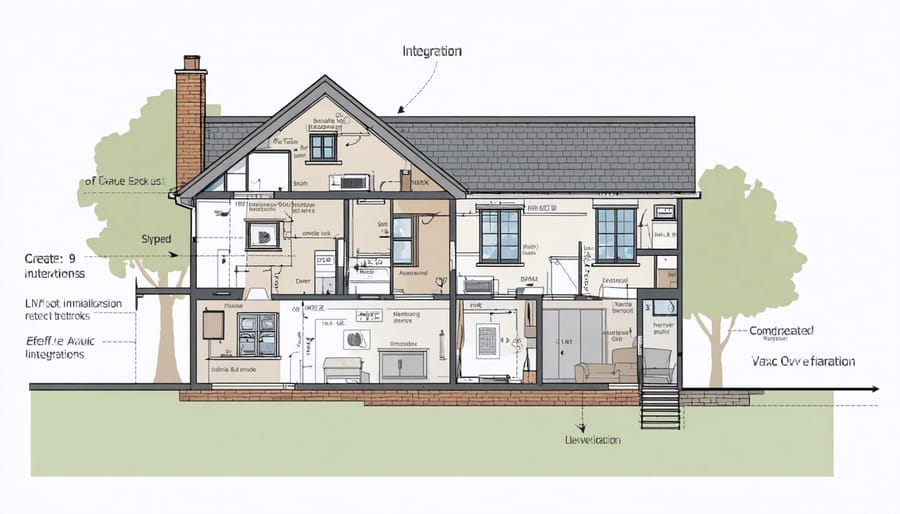Breathing new life into a historical home demands both reverence for the past and wisdom for modern living. Each creaking floorboard and weathered banister tells a story worth preserving, yet today’s families need spaces that work for contemporary life. Successful historical renovation balances authentic preservation with practical updates, transforming centuries-old craftsmanship into comfortable, functional living spaces without sacrificing architectural integrity.
Before swinging that first hammer, understand that historical renovation differs fundamentally from standard home improvement. Original materials, traditional construction techniques, and period-appropriate designs must guide every decision. Whether you’re restoring a Victorian masterpiece or reviving a mid-century modern gem, the goal remains constant: honor the home’s heritage while thoughtfully incorporating modern amenities.
The rewards of historical renovation extend beyond personal satisfaction. Properly restored historic homes often increase significantly in value, contribute to neighborhood preservation, and maintain crucial architectural heritage for future generations. Plus, many historical properties qualify for tax incentives and grants, making preservation not just culturally valuable but financially smart.
This guide will walk you through essential principles of historical renovation, from assessing original features and sourcing period-appropriate materials to navigating preservation guidelines and incorporating modern systems. Let’s explore how to blend historical authenticity with contemporary comfort in your renovation journey.
Understanding Your Historic Home’s Character
Architectural Styles Through the Ages
From the stately columns of Greek Revival homes to the ornate details of Victorian mansions, each architectural style tells a unique story of its era. Colonial homes, popular in the 18th century, feature symmetrical designs with central front doors and multi-pane windows. The Victorian period (1860-1900) brought us elaborate “painted ladies” with decorative trim, steep roofs, and wraparound porches.
Craftsman bungalows, emerging in the early 1900s, showcase natural materials, built-in cabinetry, and exposed beams. Tudor Revival homes are easily recognized by their steep-pitched roofs, decorative half-timbering, and tall narrow windows. Art Deco structures from the 1920s and 30s feature geometric patterns, flat roofs, and smooth wall surfaces.
Understanding your home’s architectural style is crucial for authentic renovation. Each style has specific elements worth preserving, from Colonial crown moldings to Craftsman window seats. When renovating, focus on maintaining these distinctive features while thoughtfully incorporating modern amenities. Remember, the goal is to honor your home’s architectural heritage while making it comfortable for contemporary living.

Conducting a Historical Assessment
Before diving into any renovation work, understanding your home’s history is crucial for making informed decisions about its restoration. Start by visiting your local historical society or county clerk’s office to obtain original building permits, architectural drawings, and property records. These documents can reveal valuable information about construction dates, previous owners, and original design elements.
Take detailed photographs of existing architectural features, including moldings, hardware, windows, and built-ins. Create a room-by-room inventory, noting unique characteristics and any signs of previous modifications. Pay special attention to original materials and craftsmanship that define your home’s character.
Online genealogy databases and newspaper archives can provide fascinating insights into your home’s past residents and historical context. Connect with long-time neighborhood residents who might share stories or even historical photographs of your property. Consider consulting with a preservation specialist who can help identify significant architectural elements and guide your renovation planning.
Document everything you discover in a dedicated project notebook or digital folder. This historical assessment will serve as your renovation roadmap, helping ensure that your updates honor your home’s heritage while meeting modern needs.
Essential Preservation Techniques
Wood Restoration and Repair
Original woodwork and flooring are treasures in historical homes, telling stories of craftsmanship from decades past. When restoring these elements, it’s essential to start with gentle cleaning methods before moving to more intensive repairs. Begin by carefully removing built-up dirt and grime using a mixture of mild soap and water, being cautious not to oversaturate the wood.
For damaged areas, traditional wood fillers made from sawdust and hide glue offer an authentic repair solution that matches the original material. When dealing with loose floorboards, use square-cut nails rather than modern screws to maintain historical accuracy. Deep scratches and gouges can be addressed using the time-honored technique of wood patching, where damaged sections are carefully cut out and replaced with matching vintage wood.
For refinishing, consider using traditional oil-based products that penetrate the wood rather than forming a surface film. These allow the wood to age naturally while providing protection. When possible, preserve the original patina rather than sanding down to bare wood – this maintains the character that only time can create.
Rotted sections require special attention. Rather than replacing entire pieces, skilled craftsmen can often splice in new wood using traditional joinery methods. This preserves as much original material as possible while ensuring structural integrity. Remember, even small repairs should match the original wood species and grain patterns for seamless restoration.
Masonry and Plasterwork
Preserving the masonry and plasterwork of a historic home requires a delicate balance between traditional techniques and modern preservation methods. Original brick, stone, and plaster walls tell stories of craftsmanship that span generations, making their preservation crucial to maintaining your home’s character.
For masonry work, start with a gentle cleaning approach using plain water and soft-bristled brushes. Avoid pressure washing, which can damage historic mortar and brick faces. When repointing is necessary, match the original mortar composition as closely as possible – traditional lime mortar is often the best choice for pre-1900s homes, as it allows the masonry to “breathe” and move naturally with temperature changes.
Historic plasterwork demands equal attention. Before making repairs, identify whether you’re working with lime or gypsum-based plaster. Many older homes feature three-coat plaster systems applied over wooden lath, creating walls that are more durable and soundproof than modern drywall. Small cracks can be repaired using compatible patching compounds, while larger areas might require the expertise of a preservation specialist.
Remember to document existing patterns and textures before beginning any work. When replacing damaged sections, use traditional tools like wooden floats and trowels to match original finishes. For both masonry and plasterwork, prioritize repairs over replacement whenever possible – even imperfect original materials often hold more historical value than perfect modern substitutes.


Window and Door Restoration
Original windows and doors are among the most distinctive features of a historical home, and preserving them is often better than replacing them with modern alternatives. Start by thoroughly assessing your windows and doors for damage, paying special attention to rot, loose joints, and broken panes.
For windows, begin with gentle cleaning using mild soap and water. Remove old paint and putty carefully, being mindful not to damage the wood underneath. Repair any rotted sections with epoxy wood filler, and replace broken ropes or chains in sash windows. Weather-stripping can significantly improve energy efficiency without compromising historical integrity.
When restoring doors, focus on maintaining original hardware whenever possible. Clean metal fixtures with appropriate solutions and protect them with quality metal wax. Address any warping by carefully planing the door, but avoid removing too much material. Replace damaged panels while preserving the original frame, and ensure hinges are properly aligned.
For both windows and doors, use period-appropriate materials for repairs. Traditional linseed oil-based putty works best for window glazing, while historic mortise locks can often be rebuilt rather than replaced. Consider adding discrete weather-stripping and draft excluders to improve energy efficiency without altering the original appearance.
Remember that properly maintained original windows and doors can last indefinitely, often outlasting modern replacements while preserving your home’s historical character and value.
Modern Updates While Maintaining Character
Climate Control Solutions
Integrating climate control into a historical home requires a delicate balance between comfort and preservation. While modern HVAC solutions offer excellent efficiency, they need careful implementation to maintain your home’s character.
Consider mini-split systems as a minimally invasive option. These units require only small wall penetrations and can be strategically placed to minimize visual impact. For homes with existing ductwork, upgrading to a high-velocity system allows you to use smaller, more discreet vents while providing effective climate control.
Hidden registers behind decorative grilles or under floorboards can preserve period aesthetics while delivering modern comfort. When possible, utilize existing chimneys or wall cavities to run necessary ductwork, minimizing structural changes to historical features.
Pay special attention to insulation improvements that won’t compromise historical materials. Consider blown-in insulation for walls and specialized attic solutions that work around original architectural elements. Weather-stripping and draft-sealing can significantly improve efficiency without altering appearance.
Remember to consult with preservation specialists and HVAC contractors who have experience with historical properties. They can help develop solutions that respect your home’s heritage while providing the comfort modern families expect. Often, the most successful installations combine multiple approaches tailored to different areas of your home.

Electrical and Plumbing Updates
Updating electrical and plumbing systems in a historical home requires a delicate balance between modern functionality and preserving architectural integrity. While older homes weren’t designed for today’s modern home systems, there are smart ways to incorporate these essential updates.
For electrical work, consider surface-mounted conduits that match your home’s trim color instead of cutting into walls. Install outlet boxes that blend with historical elements, and use period-appropriate switch plates to maintain authenticity. When running new wiring, utilize existing pathways like closets and basement joists to minimize structural impact.
Plumbing updates can be equally challenging but manageable with careful planning. Consider installing supply lines through closets or kitchen cabinets rather than tearing into original walls. When replacing pipes, opt for materials like copper or cross-linked polyethylene (PEX) that can be snaked through existing spaces. Keep original fixtures where possible, updating only their internal components for better functionality.
For both systems, work with contractors who specialize in historical renovations. They’ll understand the importance of preserving original features while ensuring safety and compliance with current building codes. Document the location of all new installations carefully, as this information will be valuable for future maintenance and renovations.
Remember to check local preservation guidelines before starting any work. Some historical districts have specific requirements about system updates, and you may need special permits. While modernizing these systems can be more complex in historical homes, the result is a safer, more comfortable living space that maintains its period charm.
Energy Efficiency Improvements
Making your historic home more energy efficient doesn’t mean sacrificing its unique character. Today’s eco-friendly renovation solutions can blend seamlessly with period features while significantly reducing your energy bills.
Start with the basics: add insulation to your attic and walls using materials that won’t damage historic structures. Blown-in cellulose insulation works well in older homes because it can be added without removing walls and is moisture-resistant. Weather-stripping around doors and windows can dramatically reduce drafts while preserving original woodwork.
Consider installing storm windows instead of replacing historic windows entirely. These preserve the original character while providing additional insulation. For more substantial energy efficiency upgrades, look into high-efficiency HVAC systems designed specifically for historic homes, which can be installed using existing ductwork.
Smart thermostats and LED bulbs in period-appropriate fixtures offer modern efficiency without compromising aesthetics. Don’t overlook simple solutions like heavy curtains and shutters – these were traditional methods of temperature control that still work beautifully today.
Remember to consult preservation guidelines and local regulations before making any changes. Many communities offer incentives for energy-efficient improvements to historic properties, making these updates more affordable while maintaining your home’s irreplaceable character.
Working with Preservation Experts
Finding Qualified Contractors
Finding the right contractor for your historical home renovation is crucial for preserving your property’s authentic character. Start by seeking specialists with verified experience in historical preservation – these experts understand the delicate balance between maintaining period details and incorporating cost-effective home updates.
Look for contractors who hold certifications from organizations like the National Trust for Historic Preservation or local preservation societies. These credentials indicate their commitment to historical accuracy and proper restoration techniques. Ask potential contractors for a portfolio of similar projects and references from other historical homeowners.
During interviews, pay attention to how contractors discuss preservation methods. Quality specialists will emphasize using period-appropriate materials and techniques while explaining how they can sensitively integrate modern amenities. They should also demonstrate knowledge of local preservation guidelines and building codes specific to historic properties.
Don’t hesitate to request detailed proposals that outline their approach to preserving original features. A good contractor will conduct thorough assessments of your home’s condition and provide clear explanations of necessary repairs and restoration work. They should be able to identify which elements can be restored versus those that need replacement with historically accurate alternatives.
Check their insurance coverage and ensure they’re properly licensed for historical renovation work. Consider scheduling site visits to their ongoing or completed projects to evaluate their workmanship firsthand. Remember, the lowest bid isn’t always the best choice – expertise in historical preservation often commands higher rates but provides better long-term value for your historic home.
Navigating Preservation Guidelines
Navigating preservation guidelines for your historical home renovation doesn’t have to feel overwhelming. Start by contacting your local historic preservation office or planning department to understand specific requirements for your area. Many neighborhoods have distinct regulations about what can and cannot be modified on historic properties, particularly regarding exterior changes.
Before picking up any tools, familiarize yourself with the Secretary of the Interior’s Standards for Rehabilitation – these national guidelines serve as the foundation for most local preservation rules. They typically focus on preserving character-defining features while allowing for reasonable modern updates.
Keep detailed records of your home’s existing conditions through photos and measurements. This documentation isn’t just for compliance; it’s invaluable for future reference and potential tax credits. Speaking of which, many localities offer tax incentives for historically appropriate renovations – be sure to ask about these during your initial research.
Common preservation requirements include:
– Maintaining original window styles and materials
– Using period-appropriate paint colors
– Preserving decorative elements and trim
– Keeping original architectural features intact
– Following specific repair methods for historic materials
Remember to submit your renovation plans for review before starting work. While the approval process might seem like a hurdle, preservation officers can often provide valuable insights and resources to help your project succeed while maintaining your home’s historical integrity.
Embarking on a historical home renovation journey is both a privilege and a responsibility. As we’ve explored throughout this guide, the key to successful restoration lies in striking the perfect balance between preserving the past and accommodating modern living needs. Remember that every historic home tells a unique story, and your renovation efforts contribute to keeping that narrative alive for future generations.
Whether you’re tackling original woodwork restoration, updating plumbing systems, or carefully selecting period-appropriate materials, approach each project with patience and respect for the building’s heritage. The extra time spent researching, planning, and consulting with preservation experts will ultimately lead to more satisfying and authentic results.
Don’t let the scope of renovation work overwhelm you. Break down larger projects into manageable phases, and always prioritize structural integrity and safety while maintaining historical accuracy where possible. Remember that it’s perfectly acceptable to incorporate modern conveniences and energy-efficient solutions, as long as they’re thoughtfully integrated into the home’s historical context.
Document your renovation journey, including before-and-after photos and detailed notes about original features. This documentation not only helps preserve the home’s history but can also be invaluable for future homeowners and renovators.
Most importantly, view your role as a temporary steward of history. The choices you make today will influence how this piece of architectural heritage survives for decades to come. With careful planning, respect for original craftsmanship, and a balanced approach to modernization, you can create a comfortable living space that honors the past while embracing the future.
